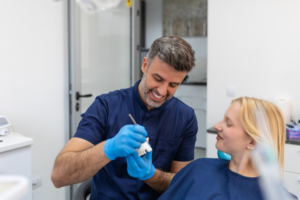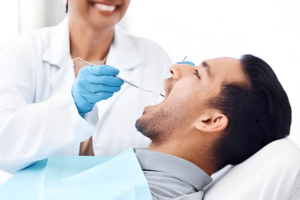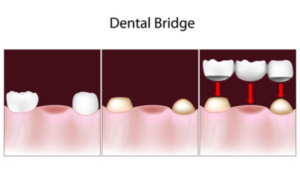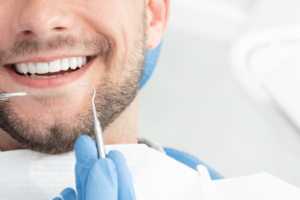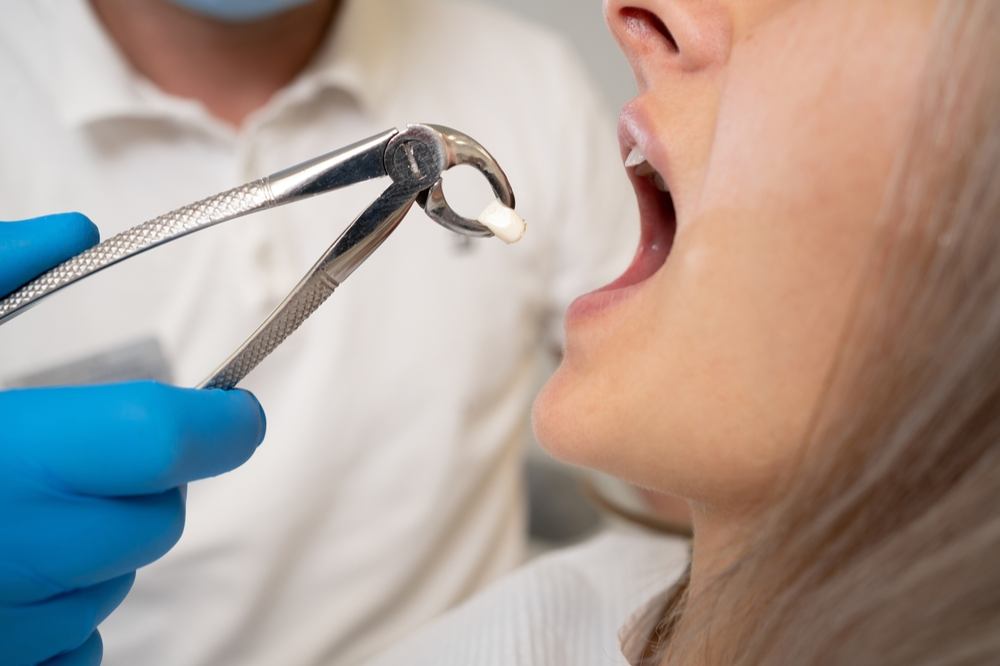
Are you or someone you know gearing up for a tooth extraction? While the thought of it might be daunting, understanding what to expect during the healing process can alleviate some of the anxiety.
In this guide, we’ll walk you through “how a tooth extraction should heal,” so you can approach the experience with confidence and knowledge.
Understanding the Process
Before delving into the healing phase, it’s essential to have a basic understanding of what happens during a tooth extraction. Whether it’s due to severe decay, infection, or overcrowding, a tooth extraction involves the removal of a tooth from its socket in the jawbone. A dentist typically performs this procedure under local anesthesia.
Immediate Post-Extraction Period
Immediately after the extraction, you can expect some bleeding from the extraction site. Your dentist will provide you with gauze pads to bite down on to help control the bleeding. Following their instructions carefully during this time is crucial to promoting proper clot formation.
The First 24 Hours
During the first 24 hours following the extraction, you may experience some discomfort and swelling around the extraction site. It is normal and can be managed with over-the-counter pain medications prescribed by your dentist or oral surgeon. Applying an ice pack to the outside of your face in 20-minute intervals can also help reduce swelling.
Blood Clot Formation
One of the most critical aspects of the healing process is the formation of a blood clot at the extraction site. This clot acts as a protective barrier, promoting healing and preventing infection. It’s essential to avoid activities that could dislodge the clot, such as vigorous rinsing, drinking through a straw, or smoking.
Oral Hygiene
Maintaining good oral hygiene is crucial during the healing process. While you should avoid brushing the extraction site for the first 24 hours, you can gently clean the rest of your mouth with a soft-bristled toothbrush. After the first day, you can carefully brush around the extraction site, being careful not to disturb the clot.
Diet Modifications
For the first few days following the extraction, it’s best to stick to a soft food diet to avoid putting undue pressure on the extraction site. Foods like yogurt, mashed potatoes, and soup are excellent options during this time. As you heal, you can gradually reintroduce solid foods into your diet.
Signs of Healing
As the days pass, you should start to notice signs of healing at the extraction site. The initial discomfort and swelling should diminish, and any bruising should fade. You may also notice some minor itching or tingling as the tissues regenerate.
Follow-Up Care
Your dentist in Rocky Mountain House will likely schedule a follow-up appointment to check your progress and remove any stitches if necessary. Attending this appointment is essential to ensuring that the healing process is proceeding as expected.
If you experience any unusual symptoms, such as severe pain, excessive bleeding, or signs of infection, contact your dentist immediately.
Final Thoughts
While the thought of undergoing a tooth extraction may be intimidating, knowing what to expect during the healing process can help put your mind at ease. Following your dentist’s instructions and taking good care of yourself can promote a smooth and successful recovery.
Remember to be patient with yourself as your body heals, and don’t hesitate to reach out to your dentist if you have any concerns. You’ll return to your routine with proper care and attention before you know it.
At Aspen Dental Clinic, our team provides expert tooth extraction treatment with compassionate care. We guide you through the healing process, offering support and advice every step of the way. Trust our general dentistry in Rocky Mountain House to ensure a smooth recovery and get you back smiling confidently.




